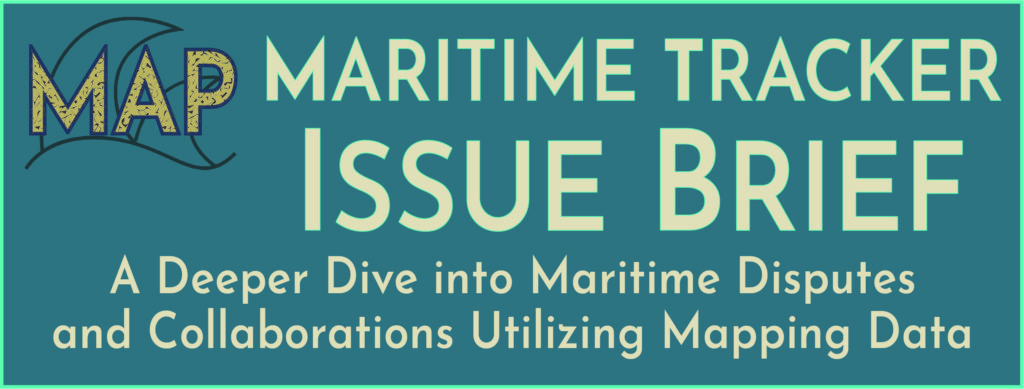

Research Associate & Program Officer

Research Associate &
Administrative Assistant
ICAS has released the first Phase of its Arctic Maritime Issue Tracker.
The scope of the first phase of the Arctic tracker focuses on two major aspects:
The Arctic Ocean is one of the most remote and unexplored regions on earth. Year-round freezing temperatures have made this waterway challenging to navigate. Even with state-of-the-art icebreaking ships, the abundant natural resources below the surface have been difficult to extract. That is now changing due to climate change. As the Arctic ice melts, waterways that were once inaccessible are becoming navigable during the summer months. The establishment of shipping lanes and trade routes through the Arctic is becoming a realistic prospect. As such, the Arctic is increasingly viewed as a region of both opportunity and potential conflict.
The Institute for China America Studies (ICAS) is committed to contributing research on developments in the Arctic to ensure that the exploitation of resources and navigation of the Arctic’s waterways is conducted in a peaceful and secure manner. This Issue Tracker is a part of our commitment to ensuring that the public, researchers, and policymakers have easy access to the latest updates regarding the Arctic Ocean.
Click here to explore all Arctic Tracker maps
The Arctic Tracker focuses on different issues than the South China Sea and the East China Sea Trackers due to the Arctic region’s unique geography and climate. The issues have greater global ramifications too. Issues worth exploring in this region include:
The scope of the first phase of the Arctic tracker focuses on two major aspects:
Relative to the East China Sea and the South China Sea, the maritime claims and entitlements of the Arctic states have largely been decided, though disputes do remain. ICAS has mapped the territorial and maritime claims of Arctic coastal states, which includes the United States, the Russian Federation, Canada, Denmark (Greenland), and Norway. Iceland, just like the other two Arctic Polar States, Sweden and Finland, is not a coastal Arctic state. However, Iceland has been included due to some of its maritime rights claims and agreements falling within the Arctic Circle.
We make a distinction between claims that have been submitted to international bodies, following the entry into force of the United Nations Convention on the Law of the Sea (UNCLOS), and broader claims that are more rooted in national legislation. In areas where maritime boundaries are in dispute, we show the stated territorial claims and entitlements of each party based on the best publicly available information.
A number of maps produced by governments and research institutions already exist that display claims to maritime jurisdiction. However, many of these maps leave an unclear impression as to what the actual international claims are, as they often do not differentiate between an internationally submitted claim and a maritime rights claim featured in national legislation. Furthermore, a number of maps may also try to ‘connect the dots’, meaning that an inference is made from partial submissions or non-demarcated territorial limits to display a map that appears more complete.
The territorial and maritime claims trackers that ICAS produces visually differentiate each claimant’s internationally submitted maritime claims from claims made through national legislation and display all submissions/partial submissions exactly as they were presented to the CLCS (Commission on the Limits of the Continental Shelf), one of the three international bodies established under UNCLOS. Therefore, these maps display what each country’s stated claims and entitlements actually are from the best available publicly sourced information and make no subjective interpretation as to what each claim or entitlement ‘should’ be.
For Phase I of the Arctic Security Trackers, three major military powers are prioritized: the United States, the Russian Federation, and Canada. Given the Arctic’s significant potential to shorten the traveling distance both in air and in the sea, the first phase of the Arctic security tracker seeks to produce the airpower projection of the three countries, particularly fighter jets, in the Arctic region. Based on publicly available information, ICAS approximated and reproduced the location of air bases for each country in the Arctic region and measured power projection based on the ranges of fighter jets from each base.
Previous ICAS maritime security trackers were displayed as interactive story maps that explored military doctrines, introduce each country’s military, and visualize each country’s overall military power projection. The Arctic Security Tracker seeks to preserve all of these elements while introducing new customizable features to allow for enhanced quality of analysis.
The Arctic Security Tracker index page currently displays an overview of military bases and power projection of the U.S., Russia, and Canada. In addition, each country now has its own profile page that includes both an overview of its military status and the tracker maps. The introduction of each country’s security strategy and goals will now be listed on the webpages.
The first new feature added to the Arctic Security Tracker allows users to turn layers on or off, which allows users to customize the map legend. The second new feature is the measurement function. ICAS understands that for geospatial-related security studies, it can be important for researchers to be able to measure and display the range, size and potentially the angle accurately. Therefore, the measurement tool is included in the trackers to allow users to create measurements and obtain accurate figures for their own research. Another function added to the Arctic Security Trackers is the drawing tool. Users will be able to draw their own features on the maps for the purposes of enhancing visuals for research and presentation purposes. Lastly, an option is now available for users to print out each map, which could include their own added drawings and measurements.
ICAS hopes that these fresh additions could further enhance user experience and better assist with studying the security dynamics in the Arctic region.
Future Arctic trackers will highlight countries, indigenous people, international and regional institutions related to the Arctic region. In addition, bilateral and multilateral agreements will be provided with the necessary background and each member country will be highlighted. As the Arctic region’s resources become increasingly accessible, non-Arctic nations have also become increasingly active members of these international institutions in order to have their voices heard on the future of the region. Therefore, it will be important to track and understand the nuances of each party’s evolving interest and stake in the region.
The Arctic region is a prime location for scientific research and the exploration of new shipping pathways. One of the ways that the Arctic countries maintain a consistent presence in the region is through the establishment of land-based and drifting ice-based research stations. In addition, non-Arctic nations with a vested interest in the region, such as China and Japan, have increasingly involved themselves in scientific research through cooperation with the Arctic nations.
The Arctic trackers will also present existing and proposed shipping routes in the region, along with their related major commercial ports. With Russia having by far the most icebreaking ships in operation and China ramping up its own fleet, the U.S. and other Arctic nations are increasingly feeling pressured to respond. As such, developments in the deployment and construction of icebreakers will be included in future trackers. In addition to melting ice, these ice breakers will increasingly allow access to new areas of research, shipping lanes, energy extraction, and more.
The next phase of the Arctic Security Tracker will continue to cover other security dynamics between the United States, the Russian Federation, and Canada, such as missile defense and nuclear submarine deployments. In addition, the other Arctic countries and their military presence in the region will also be included to compare the power dynamics of the European powers.
In the backdrop of increasingly tense relations in the Arctic, it is the goal of ICAS to use these trackers to build a platform for intellectual exchange that spans across institutions and sectors to promote greater multilateral cooperation and regional stability. Each of the topics and issues outlined above could be viewed as an entire field of study in and of themselves. Therefore, it will be important to establish a working relationship with scholars focused on these topical issues in the region to assist with researching important events and locations that could be included in future phases of the Tracker. ICAS seeks to actively engage in joint research with institutions and scholars in this regard.

The Institute for China-America Studies is an independent nonprofit, nonpartisan research organization dedicated to strengthening the understanding of U.S.-China relations through expert analysis and practical policy solutions.
1919 M St. NW Suite 310,
Washington, DC 20036
icas@chinaus-icas.org
(202) 968-0595
© 2025 INSTITUTE FOR CHINA-AMERICA STUDIES. ALL RIGHTS RESERVED.
Reflection from the 2024 Arctic Circle Assembly: Charting the Future of Arctic Governance